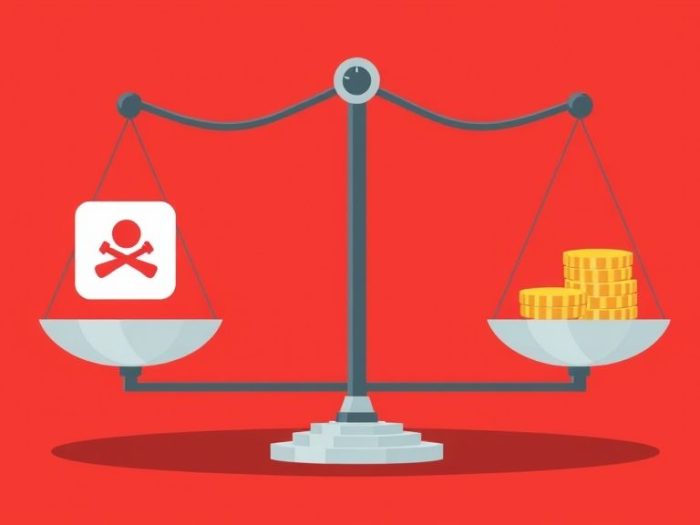In trading and investing, managing risk is just as important as identifying
potential profits. The risk-to-reward ratio is a crucial metric that helps you
assess the potential profitability of a trade relative to its potential loss.
Using a risk-to-reward calculator can optimize your trades and improve your
overall trading strategy. This article explores how to use a risk-to-reward
calculator and its benefits.
Understanding the Risk-to-Reward Ratio
The risk-to-reward ratio compares the potential profit of a trade to the
potential loss. It’s calculated as:
Risk-to-Reward Ratio = (Potential Profit) / (Potential Loss)
For example:
- If you risk $100 to potentially make $200, the risk-to-reward ratio is 1:2.
- If you risk $200 to potentially make $100, the risk-to-reward ratio is 2:1.
Ideal Risk-to-Reward Ratio
Generally, traders seek trades with a risk-to-reward ratio of 1:2 or higher. This
means the potential profit is at least twice the potential loss. However, the
ideal ratio can vary depending on your trading style, win rate, and risk
tolerance.
How to Use a Risk-to-Reward Calculator
A risk-to-reward calculator simplifies the process of calculating this ratio.
Here’s how to use it:
1. Input the Following Values:
- Entry Price: The price at which you plan to enter the trade.
- Target Price: The price at which you plan to take your profit.
-
Stop-Loss Price: The price at which you will exit the trade to
limit your loss.
2. Calculate Potential Profit:
Potential Profit = (Target Price – Entry Price) * Number of Shares/Contracts
3. Calculate Potential Loss:
Potential Loss = (Entry Price – Stop-Loss Price) * Number of Shares/Contracts
4. Calculate Risk-to-Reward Ratio:
Risk-to-Reward Ratio = Potential Profit / Potential Loss
5. Interpret the Results:
The calculator will provide the risk-to-reward ratio. Evaluate if it aligns with
your trading plan.
Benefits of Using a Risk-to-Reward Calculator
-
Objective Assessment: Provides an objective measure of the
trade’s risk and potential. -
Improved Decision-Making: Helps you avoid taking trades with
unfavorable risk-to-reward ratios. -
Risk Management: Encourages disciplined risk management by
setting clear profit targets and stop-loss levels. -
Strategy Optimization: Allows you to compare the risk-to-reward
ratios of different trading strategies.
Examples
Example 1: Favorable Ratio
Entry Price: $50, Target Price: $55, Stop-Loss Price: $48. The calculator shows
a risk-to-reward ratio of 1:2.5, indicating a good potential profit relative to
the risk.
Example 2: Unfavorable Ratio
Entry Price: $100, Target Price: $102, Stop-Loss Price: $98. The calculator
shows a risk-to-reward ratio of 2:1, suggesting the potential loss is twice the
potential profit.
Important Considerations
-
Win Rate: A lower risk-to-reward ratio (e.g., 1:1) may be
acceptable with a high win rate. -
Trading Style: Scalpers may use different ratios than swing
traders. -
Market Conditions: Adjust your risk-to-reward targets based on
market volatility. -
Probability of Success: The risk-to-reward ratio doesn’t guarantee
success; consider the likelihood of hitting your target and stop-loss.
Conclusion
A risk-to-reward calculator is a valuable tool for traders and investors. By
quantifying the potential risk and reward of a trade, you can make more
informed decisions, manage risk effectively, and improve your overall trading
outcomes. Remember to consider your trading style, win rate, and market
conditions when using this tool.
Related Keywords
Risk-to-reward calculator, risk-reward ratio, trading calculator, trade
optimization, risk management trading, profit target, stop-loss, trading
strategy, trading analysis, trading tools.
Frequently Asked Questions (FAQ)
1. What is the risk-to-reward ratio?
The risk-to-reward ratio compares the potential profit of a trade to the
potential loss.
2. How is the risk-to-reward ratio calculated?
It’s calculated as: Risk-to-Reward Ratio = (Potential Profit) / (Potential
Loss).
3. What is considered a good risk-to-reward ratio?
Generally, traders seek a ratio of 1:2 or higher, meaning the potential
profit is at least twice the potential loss.
4. What values do I need to use a risk-to-reward calculator?
You’ll typically need the entry price, target price, and stop-loss price.
5. How does a risk-to-reward calculator help traders?
It provides an objective assessment of a trade’s risk and potential,
improving decision-making and risk management.
6. Does a favorable risk-to-reward ratio guarantee a winning trade?
No, the risk-to-reward ratio doesn’t guarantee success. It’s a tool to
assess the potential risk and reward.
7. How does win rate affect the ideal risk-to-reward ratio?
A lower risk-to-reward ratio might be acceptable with a high win rate, as
you’re winning more often.
8. Should the risk-to-reward ratio be the same for all trading styles?
No, different trading styles (e.g., scalping, swing trading) may use
different risk-to-reward ratios.
9. How do market conditions influence the risk-to-reward ratio?
Market volatility can influence your risk-to-reward targets. Higher
volatility might warrant wider profit targets and stop-loss levels.
10. Is using a risk-to-reward calculator essential for trading?
While not strictly essential, it’s a valuable tool for disciplined risk
management and improving trading decisions.



